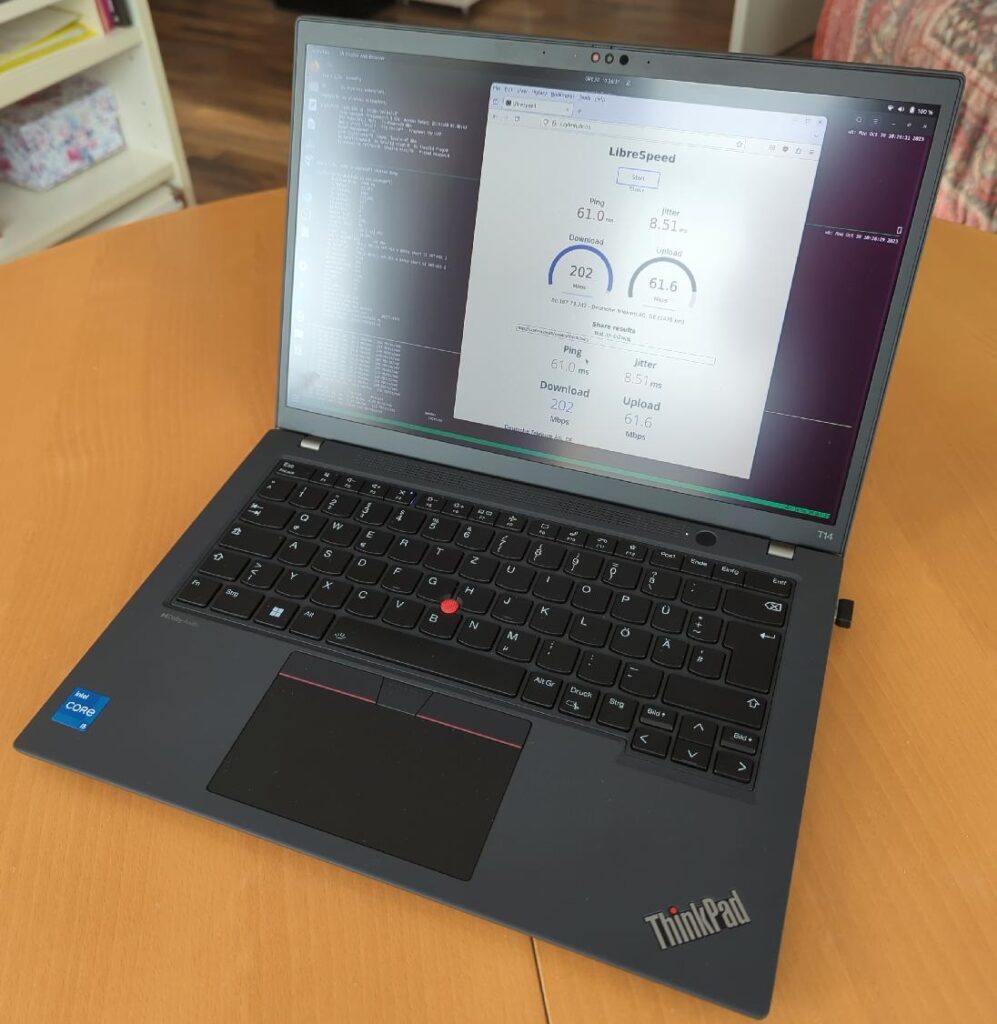
About 6 weeks ago, Lenovo launched yet another generation of their Thinkpad notebooks. As I needed a new notebook, I thought I’d give it a try and see how well Linux would run on brand new hardware. I’ve made some good experiences back in 2021 when I bought a relatively recent notebook with an AMD CPU. Instead of an AMD CPU, however, I chose the Intel variant of the Lenovo T14 Gen 4 this time around. So here’s the story of how that went.
These days, Linux runs pretty much out of the box on all business notebooks that don’t have any kind of special hardware and with a little bit of effort, supports fancy graphics cards and other hardware as well. The T14 Gen 4 model I bought has a 13th generation Intel i5 1335U CPU with a tri-band AX211 Wi-Fi (2.4, 5 and 6 GHz) chip, 16 GB RAM, a free RAM slot for expandability, and a replacable 1 TB Samsung NVMe SSD. In addition, it features a 1920×1200 pixel display, i.e. it has 120 pixel more than the traditional full-HD displays that were used in the past. As it’s a high end notebook, it also includes USB-C power charging, USB 3.2 Gen 2 (10 Gbit/s) and Thunderbolt 4 (40 Gbit/s). And, very important for me, I could buy the notebook without an operating system, which significantly reduced the price, and I would be most unhappy to pay for something I do not use anyway.
So how did this experiment go? Well overall, I’d say pretty well. At first, I tried to run a 3.5 year old Ubuntu (20.04) with kernel version 5.15 on it, which was released 2 years ago. Surprisingly, everything worked out of the box, except the Wi-Fi. Still, a bit of a disappointment, but really, it would have been nothing short of a miracle if this had worked on hardware that was released 6 weeks ago. With a current Ubuntu 23.10, everything, including the Wi-Fi, camera, microphone, speakers as well as suspend/resume worked without any additional configuration. I’m impressed!
So this is the story in short. But of course there is a lot more to tell. Thus, I’ll have a number of follow up posts that will look into particular things like how to get the Wi-Fi to work with the current Ubuntu 22.04 Long Term Support (LTS) version, wireless performance in the 5 and 6 GHz bands, interesting and positive suspend/resume and power consumption surprises, performance compared to previous generation notebooks, use of the fast P-cores and the efficient E-cores of the CPU, USB/Thunderbolt performance, etc. etc. Stay tuned.